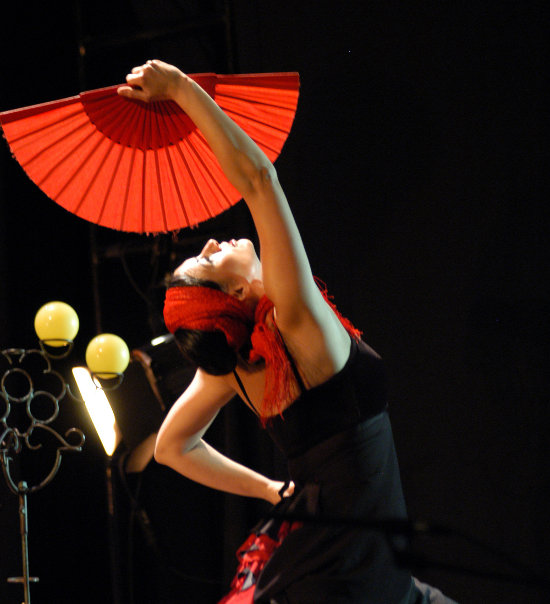
If you want (or have) to experience it as such, the Edinburgh Fringe can be the world’s densest theatrical market: it’s possible to see eight shows a day for three weeks, and what you remember is usually the extremes—the shows that are either great and life-changing or harrowingly awful. It may seem like in this environment productions that are all spectacle would do very well—they’re self-contained and undemanding and there’s nothing to consider or resolve after—and in a way they do. They pull in the audiences and get good press, but the noise and saturation of the Fringe tends to shorten the life they have in the memory.
It would be a shame if Malaje slipped beneath the waves. It could do very well at a big London venue with strong publicity, and while it’s shallow in the sense that all of its pleasures are surface-level and instantaneous, it certainly hasn’t been put together cynically or without heart. Combining flamenco and circus, Malaje sees the musicians on stage with the performers, physical skills entwining with the music in sequences where an acrobat stamps and somersaults to the beat, or a juggler uses rubber balls to strike out the rhythm the musicians then improvise around. The characters speak (or shout across one another) in Spanish most of the time, which is fine—it’s easy enough to follow the push and pull, the mock aggression, between the men and the women which moves the show from one scene to the next and defines all onstage relations. It’s Boys v. Girls, basically. But not without lightness. The brash swagger of the men and sultry heartlessness of the women is leavened by some very good clowning (you might not identify them as clowns, is how good), and there’s a disruptive line of randomness that runs through the production: a musician is suddenly able to control a performer with his instrument; after an especially frenetic acrobatic sequence, a character falls down dead and is carried away in splits, everyone funereally sombre; a woman cries a lake of tears, swims in it.
The circus routines don’t have anything new—contact, stick and ball juggling, acrobatics, and handbalancing are the disciplines—but are pleasantly unaffected by anything other than flamenco rhythms. Beautiful shapes and patterns, and a straightforwardness of presentation that in the end is part of the charm and success of the show—even if you won’t remember it forever.